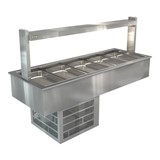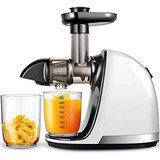Blast chillers could be considered a 'saturated market', but what separates the top of the range from the rest?
Like any piece of equipment in a commercial kitchen, it comes down to the question of quality, and the age-old adage that 'you get what you pay for'. There are many blast chiller manufacturers in today's market, but the questions a prospective buyer should be asking are:
- Where is the item made?
- Is it a reputable brand?
- Is the ambient rating suitable for use in our hot Australian climate?
- Is it easy to use?
- Does it come with pre-programmed cycles that I can use?
- How easy can I export the HACCP reports?
And possibly the most important question when you talk of any imported products, do they have reliable and dependable service back-up support available and spare parts available locally, so when something does go wrong they are promptly on-site, with trained technicians and the necessary parts, to get your kitchen online again?
Who uses blast chillers and has the market changed over the years?
In the past blast chillers would've only been associated with food manufacturers and large hotels, but with improvements in technology, as well as enhanced and streamlined manufacturing methods, blast chillers are now readily available, and more importantly affordable, to food service businesses of all sizes - from small corner cafés to larger restaurants, right the way through to large-volume catering businesses.
This diverse market has meant that the food service industry now has access to a wide range of different models to suit its requirements, from small under-counter and single-phase powered units to bigger reach in models, and then the larger roll-in models, to suit the kitchen's oven trolleys.
Whatever a customer's requirements, large or small, there is a model to suit.
The importance placed on food safety and longevity in hospitality continues to grow – what role do blast chillers play in this evolution?
Blast chillers are an essential part of any kitchen's Food Safety Management, and/or HACCP Plan. Not only do blast chillers ensure that the customer's food products are not at risk of bacteria proliferation, they also prolong the life of the product, reducing waste costs.
Food quality is also vastly improved, with the rapid chilling processing capturing and preserving the food's original organoleptic qualities, including its colour, moisture content, nutrients, and most importantly its flavours. Regenerated food that has been blast chilled will taste like it's just been freshly cooked.
Also, with the efficiencies and time savings created by a blast chiller, the chef can look to have a wider menu, and make savings on their ingredient purchases.
What does the future hold for blast chiller technology? What else can be achieved?
Although blast chilling is already becoming quite prevalent in all sizes of food service establishments, new technology is already here with the launch of ALL-IN-ONE units, which are capable of not only blast chilling and shock freezing, but also Prooving (for creating breads and pastries), slow cooking and regeneration.
This means that customers can get a much higher return on investment by utilising their blast chiller for many different cycles. They can also create massive efficiencies and time and energy savings by setting the machine to run different cycles concurrently, with no staff supervision required. They can work 24/7 – all the while ensuring maximum food safety and quality is retained.
With the appropriate implementation of such an item in a commercial kitchen, it would pay for itself in food, wastage, labour, time and energy savings.
















